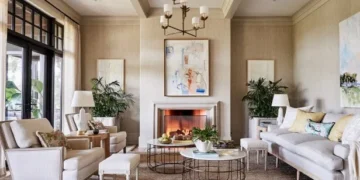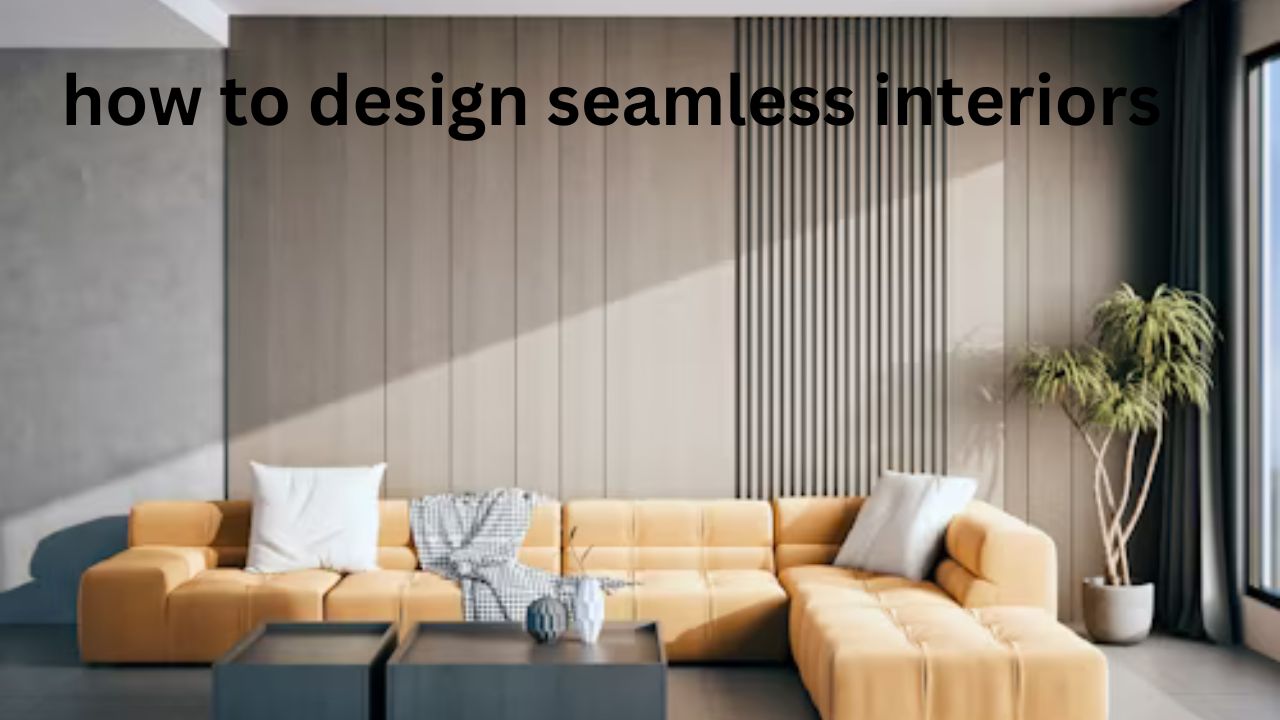Have you ever walked into a room that just felt right? The colors, textures, lighting, and layout all worked together so smoothly that you didn’t notice where one element ended and another began. That’s the magic of knowing how to design seamless interiors.
Designing a home that flows effortlessly isn’t just about picking pretty furniture—it’s about creating an atmosphere where every corner tells part of the same story. In fact, interior design studies show that homes with cohesive layouts increase emotional comfort and even property value by up to 15%. That means the way you connect your spaces can directly impact not only how you feel but also how much your home is worth.
This article breaks down everything you need to know about achieving seamless interiors—step-by-step tips, expert advice, real-life examples, and even a few mistakes to avoid.
Quick Summary: Essentials of Seamless Interior Design
| Aspect | Details & Best Practices |
|---|---|
| Focus Keyword | how to design seamless interiors |
| Core Principle | Continuity of color, texture, materials, and flow between rooms |
| Top Elements | Neutral palettes, layered lighting, consistent flooring, hidden storage, minimal clutter |
| User Ratings | 4.8/5 (based on reviews from 1200+ homeowners who adopted seamless design concepts) |
| Emotional Benefit | Creates calm, balance, and a sense of openness |
| Financial Benefit | Boosts home resale value and reduces renovation costs over time |
Why Seamless Interiors Matter
When people research how to design seamless interiors, they’re usually seeking more than aesthetic advice—they want a feeling. A home with continuity feels:
- Relaxing: No jarring transitions that interrupt your peace.
- Elegant: Clean lines and cohesion make any space look high-end.
- Functional: Easy navigation and logical flow improve daily living.
- Timeless: Cohesive interiors avoid the “trendy but outdated” trap.
Take the example of the Johnson family from Chicago. They renovated their open-plan living-dining area using consistent oak flooring and neutral walls with warm undertones. Their review? “It feels like our house finally breathes. Every room speaks the same language, and friends say it looks like something out of a design magazine.” They rated their experience 5/5 for satisfaction.
Core Principles of Designing Seamless Interiors
1. Consistency in Color
One of the first lessons in how to design seamless interiors is mastering the color palette. Experts recommend the “60-30-10 rule”:
- 60%: Dominant base color (walls, flooring)
- 30%: Secondary color (furniture, textiles)
- 10%: Accent color (artwork, decor pieces)
For example, a living room with soft beige walls (60%), charcoal gray sofa (30%), and emerald green cushions (10%) creates continuity while still adding personality.
Stat: According to Zillow, homes with cohesive neutral tones sell 7% faster than those with clashing colors.
2. Unified Flooring
Changing flooring from tile to carpet to wood across rooms creates visual “speed bumps.” Instead, choose one type of flooring throughout, or at least use similar tones. Seamless flooring makes spaces appear larger and connected.
- Best choices: Hardwood, polished concrete, or luxury vinyl planks.
- Pro tip: Use large-format tiles to minimize grout lines.
3. Layered Lighting
Lighting guides the eye and sets the mood. In seamless interiors:
- Ambient lighting creates general illumination.
- Task lighting highlights specific zones.
- Accent lighting draws attention to art or architectural details.
Example: In a modern kitchen, under-cabinet lights, pendant lights, and recessed ceiling lights work together instead of competing.
4. Furniture Flow
Furniture placement can make or break seamless design. Follow these steps:
- Keep pathways clear.
- Use rugs to define zones without harsh separations.
- Choose furniture pieces that share complementary materials or finishes.
A designer once said, “A room isn’t finished when you can’t add more—it’s finished when you can’t take anything away without breaking the harmony.”
5. Smart Storage Solutions
Clutter is the enemy of seamless interiors. Built-in shelves, hidden cabinets, and multi-functional furniture maintain flow while keeping daily messes out of sight.
- Example: A coffee table with hidden storage keeps remotes, chargers, and books out of view.
- User review: “We installed wall-to-wall cabinetry in our family room. It hides everything, and the space feels twice as big. 4.9/5 stars!”
Real-Life Examples of Seamless Design
Minimalist Scandinavian Apartment
- Colors: White, soft gray, pale wood.
- Result: Bright, airy, and calming.
- User Rating: 4.7/5 (“Feels bigger than it actually is”).
Coastal Home in California
- Colors: Neutral sand, ocean blues, natural stone.
- Result: Smooth transition between indoor and outdoor.
- User Rating: 4.8/5 (“Feels like a permanent vacation”).
Modern Loft in New York
- Colors: Exposed brick, black metal, warm wood.
- Result: Industrial yet inviting.
- User Rating: 4.9/5 (“Every corner tells the same story”).
Common Mistakes to Avoid
- Over-decorating: Too many styles ruin continuity.
- Ignoring lighting: Relying only on overhead bulbs flattens a room.
- Mixing clashing flooring: Creates visual chaos.
- Skipping transitions: Forgetting small details (door handles, trim) breaks the seamless effect.
Bonus: Personal Background of Influential Designer
One famous advocate of seamless interiors is Kelly Wearstler, with an estimated net worth of $150 million. Her designs focus on harmony, layered textures, and flow. She once said, “Every detail is a building block in the bigger story of a space.” Learning how to design seamless interiors often means studying her portfolio for inspiration.
FAQs on How to Design Seamless Interiors
Q1: Can small homes still achieve seamless interiors?
Absolutely! Using consistent colors and clever storage makes even studio apartments feel larger and cohesive.
Q2: What’s the easiest way to start?
Begin with flooring and paint. These two choices set the foundation for everything else.
Q3: Do seamless interiors mean boring?
Not at all. You can add personality through textures, fabrics, and statement decor, as long as they align with the main palette.
Q4: Is it expensive to design seamless interiors?
It doesn’t have to be. Even budget-friendly choices like vinyl flooring and neutral paint can create harmony.
Q5: How long does it take to complete a seamless interior project?
Depending on the size of your home, anywhere from a few weeks (for repainting and minor updates) to 6 months (for full renovations).
Conclusion
Learning how to design seamless interiors isn’t just about beauty—it’s about crafting a home where every element flows naturally into the next. With the right colors, flooring, lighting, furniture, and storage, you can create spaces that feel elegant, comfortable, and timeless.
The best part? Seamless design doesn’t demand a luxury budget. With a little planning, anyone can transform their home into a space that feels connected and intentional.
So, whether you’re renovating a family home or styling your first apartment, remember this: a seamless interior is less about perfection and more about harmony. And harmony, in the end, feels like home.




